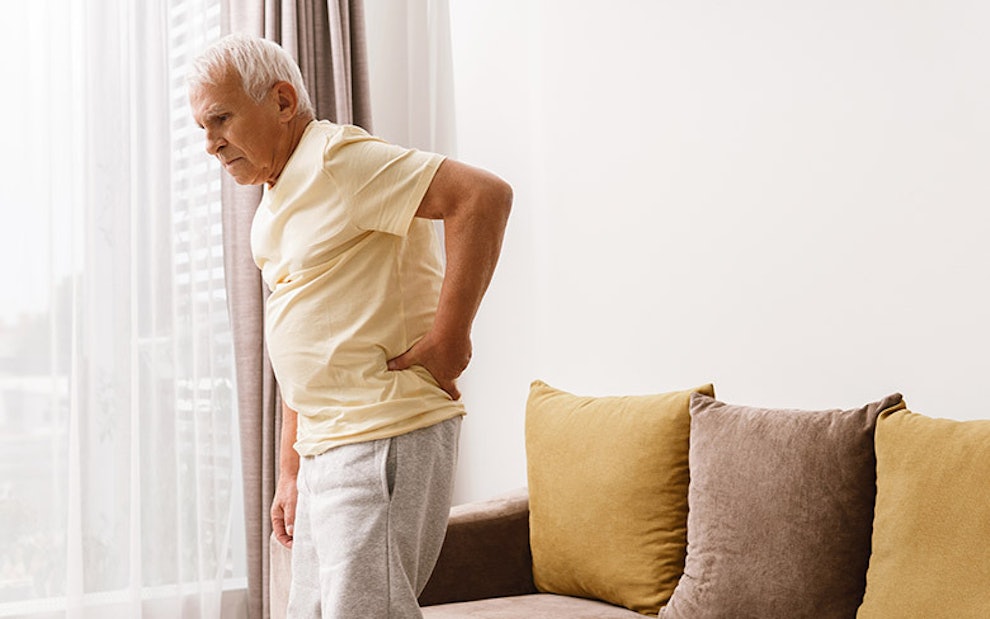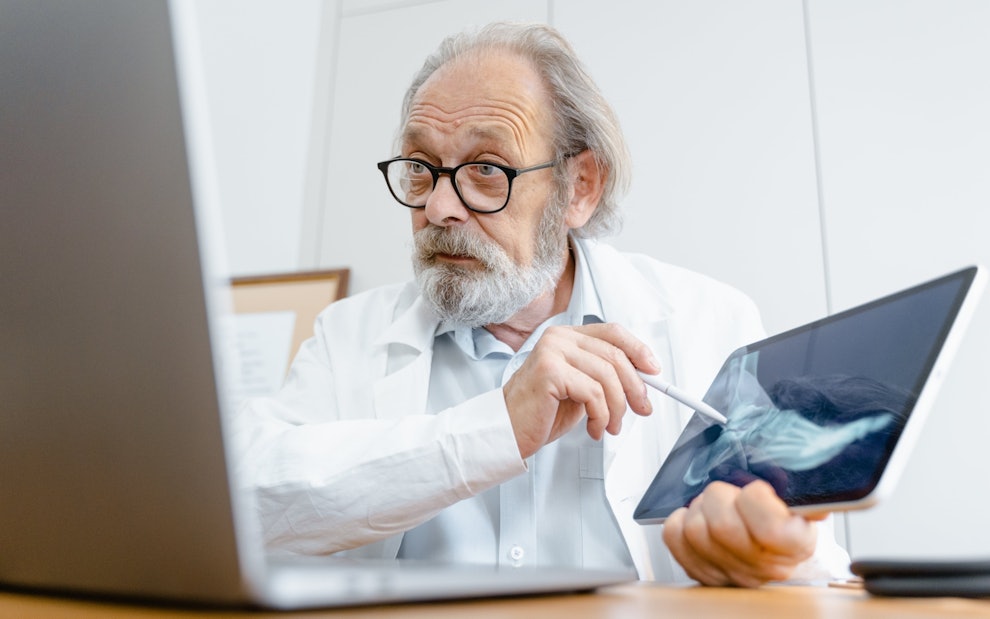7 Tips For Back Pain: Coping, Treatment, and More
Article at a glance
There are three main types of back pain: acute, subacute, and chronic.
Prevention is key for preventing back problems in the first place.
Treatment options include taking pain relievers, stretching, seeing a pain specialist, and more.

Back pain is extremely common in many adults, ranging in severity. This article will explain everything you need to know about back pain, including coping tips for back pain, risk factors, causes, and more.
Types of Back Pain
There are three main types of back pain including acute back pain, subacute back pain, and chronic back pain.
Acute Back Pain: Acute back pain is defined by its sudden onset and usually lasts for a few days or a few weeks.
Subacute Back Pain: Subacute back pain is back pain that either comes on suddenly or gradually. It usually lasts anywhere from four to 12 weeks.
Chronic back pain: Chronic lower back pain happens either suddenly or over time. Chronic pain happens for a period of time, longer than 12 weeks.
Back Pain Symptoms
Symptoms of back pain include:
Increased pain levels when lifting or bending
Worsening pain while sitting, sitting, or standing
Sporadic back pain
Back stiffness in the morning that improves with physical activity
Radiating pain from the back to the buttocks, legs, or hip

Back Pain Risk Factors
There are a number of risk factors for developing back pain including:
Fitness Level: Back pain is more likely to occur in people who are not physically fit (i.e. weak back or stomach muscles). Excessive exercise following a period of physical inactivity can trigger back pain as well.
Obesity: Being overweight or obese can put extra stress on the back and cause pain.
Job: Certain jobs can increase one’s risk of developing back problems. For example, roles that require heavy lifting, pushing, pulling, or twisting. Those who work a desk job and have poor posture or don’t have proper seating can also experience back pain as a result.
Age: Back pain becomes more common with older age, specifically after age 45.
Genetics: Some disorders related to one’s genetics can cause back pain.

Causes of Back Pain in the Body
There are a number of potential causes of back pain in the body.
Mechanical or Structural Issues: Issues that develop in the spine, discs, muscles, ligaments, or tendons in the back can cause back pain. Such problems can include sprains, strains, etc.
Inflammation: Inflammatory conditions such as Ankylosing Spondylitis and other types of inflammatory arthritis of the spine can cause back pain.
Medical Conditions: Medical conditions such as osteoporosis, kidney stones, infections, pregnancy, etc. can be the culprit of back pain.

Back Pain Prevention
Prevention is key. Some prevention tips such as exercising regularly, maintaining good posture, and more can stop back pain before it starts.
Keep a Healthy Weight
Maintaining a healthy weight can keep back problems at bay. Eating right, exercising regularly, and managing stress can all play a part in keeping weight stable.
Exercise
Not only is exercise imperative for overall health and wellness but staying physically active can help prevent back pain as well. Strength training is particularly beneficial for preventing back problems. The U.S. Department of Health and Human Services recommends strength training and stretching at least twice per week to prevent pain.
Note: To learn more about the overall importance of physical activity, visit this source.
Maintain Proper Posture
Good posture is fundamental for preventing back problems. Some tips include:
- Ensure you are using proper form when lifting weights: Maintain the natural curve of your lower back and lift with your leg muscles. Learn more about proper form and lifting at this resource.
- Be mindful of posture while using technology: For example, keep your phone at eye level as well as stand or sit upright while you’re using it. Learn more about proper posture and technology at this resource.
- Wear shoes with solid support: This is important for keeping your back supported and injury-free.
In order to maintain proper posture, keep your shoulders relaxed, keep your feet flat on the floor, and engage your core muscles.

Back Pain Relief Tips & Treatment
There are a number of ways to help alleviate the symptoms that come with back pain such as pain relievers, stretching, and more.
Take Pain Relievers
Pain relievers, such as nonsteroidal anti-inflammatory drugs (NSAIDs), can relieve pain and reduce inflammation. NSAIDs include over-the-counter medications such as ibuprofen.
If NSAIDs aren’t working effectively to relieve back pain, your doctor may prescribe other options, such as muscle relaxants, to ease the pain.
Stay Active
While it may sound more appealing to stay in bed and rest when dealing with back pain, staying active is actually better in the long run. Even low-impact exercises, walking, tai chi, or yoga, can increase blood flow, which reduces stiffness in your muscles.
Stretch
Stretching exercises can be beneficial for dealing with back issues. Check out page nine of this resource for stretching exercises you can perform at your desk.
Note: To learn more about proper stretching for the back and other muscles, visit this source.
Avoid Being Sedentary
Remaining in the same position for long periods of time can make the pain worse. This is especially true for those who work a desk job. Be sure to get up and move around and change positions if you have been sedentary for a long period of time.
Set Up an Ergonomic Workspace
Ergonomics refers to creating a comfortable and effective working space. Getting a standing desk, ensuring you have a comfortable chair, and having your computer screen at the appropriate height can make a huge difference.
Note: Learn more about setting up an ergonomic workspace at this resource.
Consider Physical Therapy
A physical therapist can help those struggling with back issues. Physical therapists focus on movement and can focus on strengthening the back and abdominal muscles.
Note: Learn more about physical therapy and Medicare coverage at this resource.
Visit a Pain Specialist
Seeing a pain specialist can be helpful to identify the exact cause of your back pain so it can be properly treated. You may ask for a referral to a spine specialist to address specific back pain issues.

When To Contact Your Doctor
You should contact your doctor about your back pain if it is accompanied by any of the following symptoms:
Numbness and/or tingling
Severe pain that does not improve with medication
If you had an injury or fall
Issues urinating
Weakness, pain, or numbness in the legs
Fever
Unintentional weight loss

FAQ
How do you relieve back pain easily?
Some simple tips that can help relieve back pain include taking pain relievers, staying physically active, stretching, and avoiding staying sedentary for long periods of time.
Is heat or ice better for back pain?
When you start to feel pain in your back, start with icing the area. If the pain continues after a day, switch to heat.
Become a patient
Experience the Oak Street Health difference, and see what it’s like to be treated by a care team who are experts at caring for older adults.




